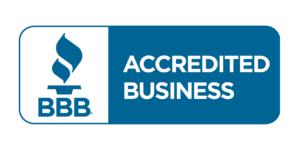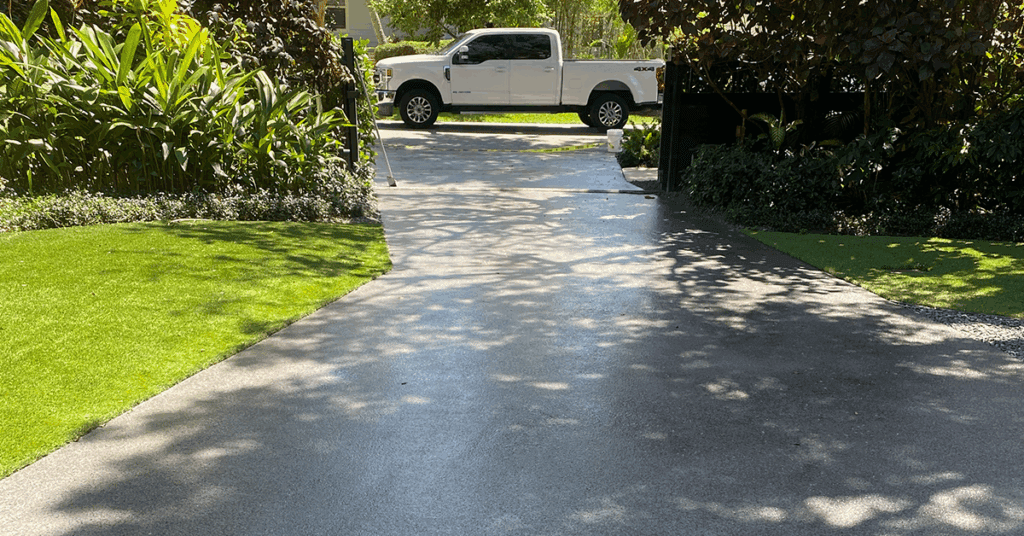Is your driveway looking a little sad? We’ve all been there. You pull up to your home after a long day, and the first thing you see is a web of cracks, ugly stains, and faded, crumbling concrete. It just kills your home’s curb appeal. For years, the only real solution was to grit your teeth, pull out the checkbook, and pay for a full, messy, and expensive replacement.
But what if there was a better way?
Good news: there is! It’s called driveway resurfacing, and it’s a game-changer for homeowners. Instead of ripping everything out, this modern approach gives your driveway a brand-new, incredibly durable face. It’s faster, more affordable, and the results are absolutely stunning.
Let’s dive into why resurfacing is often the smartest choice you can make for your home and explore the cool science behind the coatings that make it all possible.
The Big Wins: Why Resurface Instead of Replace?
When you compare resurfacing to a full replacement, the benefits become crystal clear. It’s not just about patching a few cracks; it’s about giving your driveway a complete, high-performance makeover.
It Saves You a Ton of Money
Let’s talk about the number one concern for any home project: the cost. A complete driveway replacement is a massive undertaking. It involves noisy demolition, hauling away tons of old concrete, preparing the ground, and then pouring a brand-new slab. The labor and material costs add up fast.
Driveway resurfacing cost
on the other hand, is significantly lower because you’re using the concrete you already have. As long as your driveway is structurally sound, a professional team can work with the existing slab, saving you a huge chunk of change that you can put toward other home projects.
It’s Incredibly Fast
A full replacement can turn your front yard into a construction zone for a week or even longer. Resurfacing is a much quicker process. In most cases, the job can be completed in just a few days. That means less disruption to your daily routine and a faster return to enjoying your beautiful new driveway.
A Jaw-Dropping New Look
This isn’t just a repair; it’s a major cosmetic upgrade. With modern resurfacing systems, you can completely change the look of your driveway. You can choose from a huge variety of colors, textures, and even decorative flake finishes that mimic the look of granite or quartz. Your old, boring concrete slab can be transformed into a custom-designed feature that makes your entire property pop.
It’s Tougher Than You Think
You might think that a new layer on top wouldn’t be as strong, but the opposite is true. The advanced coatings used in driveway resurfacing create a new surface that is often stronger and more resilient than the original concrete. These systems are designed to resist stains, chemicals, scratches, and the brutal effects of weather, giving you a driveway that’s built to last.
The Magic Behind the Strength: It’s All in the Layers
So, how does this process create such a tough and beautiful finish? Think of it like painting a room in your house. You wouldn’t just slap a coat of paint on a bare wall, right? You’d use a primer first to make sure the paint sticks and looks great.
Driveway resurfacing works on a similar principle, but on a much more advanced,
industrial-strength level. It all comes down to two critical layers: the base coat and the top coat.
- The Base Coat: This is the foundation of the entire system. Its main job is to sink into the pores of your existing concrete and form an unbreakable bond. This layer is all about adhesion and strength.
- The Top Coat: This is the clear shield that protects everything underneath. It’s what takes the abuse from your car’s tires, the sun’s harsh UV rays, and anything else life throws at it. This layer is all about durability and protection.
The real secret to a long-lasting job is using the right type of coating for each of these layers. And that brings us to the two heavy hitters in the industry: Epoxy and Polyaspartic.
The Perfect Combination for a Bulletproof Driveway
So, what’s the winning formula?
If you start researching concrete driveway resurfacing, you’ll see a lot of companies trying to sell you on one coating over the other. They’ll say, “Polyaspartic is way better than epoxy!” or vice-versa.
Here’s the honest truth, based on conversations with chemical experts: It’s not a competition. They are different products with different strengths, designed to be used for different jobs. The best professionals know that it’s not about picking a “winner” but about using them together as a team to get the best possible result.
For most projects, the absolute best system is an epoxy base coat combined with a polyaspartic top coat.
This “best of both worlds” approach gives you the unbeatable, deeply penetrating bond of epoxy as your foundation. Then, you lock it all in and protect it with the scratch-proof, UV-proof shield of a polyaspartic top coat. You get maximum strength and maximum protection.
Now, if your driveway is in direct, blistering sun all day long, a professional might recommend using a full polyaspartic system (both base and top coat). You sacrifice a little bit of that deep bond, but you gain total UV stability throughout all layers. A good installer will know exactly which combination is right for your specific situation.
What is Epoxy?
Think of epoxy as a thick, super-strong glue. Its biggest advantage is that it cures slowly. This might sound like a bad thing, but it’s actually its superpower.
Because it takes longer to dry, the epoxy has more time to seep deep into all the tiny pores and cracks in your concrete. This creates an incredibly powerful mechanical bond that is second to none. It literally becomes one with your old driveway.
- Epoxy’s Strengths: Unbeatable bond with concrete, thicker application, and many formulas come with a built-in moisture barrier, which helps protect against any dampness coming up from the ground.
- Epoxy’s Weakness: Epoxy doesn’t like direct sunlight. Over time, heavy UV exposure can cause it to “amber,” which means it can develop a slightly yellowish tint.
- Best Use: As a base coat. It creates the strongest possible foundation for the entire system.
What Is Polyaspartic?
Polyaspartic is a newer, more advanced type of coating. Think of it as a super-tough, crystal-clear protective shell.
Its biggest advantage is its lightning-fast cure time and its incredible resilience. It’s also completely UV stable, meaning the sun’s rays can’t turn it yellow. Ever. It’s also more flexible and far more scratch-resistant than epoxy.
- Polyaspartic’s Strengths: Extremely scratch-resistant, 100% UV stable (no yellowing!), and dries fast for a quick turnaround.
- Polyaspartic’s Weakness (as a base coat): Because it dries so fast, it doesn’t have as much time to penetrate the concrete as deeply as epoxy. The bond is still very good, but epoxy is stronger.
- Best Use: As a top coat. Its resistance to scratches and UV rays makes it the perfect final layer to protect your driveway for years to come.
It’s Not Just for Driveways!
The same technology that makes your driveway look amazing can be used all over your property. Because these coating systems were originally designed for heavy-duty commercial spaces like airplane hangars and showrooms, they are tough enough for just about anything.
You can use them to transform:
- Garages: The most popular use after driveways!
- Patios: Create a beautiful, stain-proof outdoor living space.
- Pool Decks: Get a safe, textured, and chemical-resistant surface.
- Walkways and Sidewalks: Boost your entire home’s curb appeal.
- Basements & Kitchens: Yes, you can even bring this durable flooring inside!
This is a commercial-grade product that gives your home a high-end, incredibly durable finish that you just can’t get with regular paint or sealers.
FAQ’s
How long does driveway resurfacing last?
A professionally installed system with high-quality epoxy and polyaspartic coatings can last for 10-15 years or even longer with proper care. It’s a true long-term investment.
Is driveway resurfacing really cheaper than replacing it?
Yes, in almost all cases. Because you’re saving on demolition, disposal, and the cost of tons of new concrete, resurfacing is significantly more budget-friendly than a full replacement.
Can any concrete driveway be resurfaced?
Most can, but the underlying concrete needs to be structurally sound. If your driveway has massive heaving, deep cracks, or is severely crumbling, it might be too far gone. A professional can assess its condition and let you know.
Will a resurfaced driveway be slippery when wet?
Not at all! During the application of the top coat, an anti-slip aggregate can be added to the mixture to enhance its slip resistance. This creates a textured surface that provides excellent grip, even in rainy or snowy conditions.
What’s the difference between resurfacing and just resealing?
Sealing is a temporary, thin protective layer that you need to reapply every couple of years. Resurfacing is a much more robust process that involves grinding the concrete, applying a thick, multi-layer coating system, and completely transforming the surface.
How do I clean my newly resurfaced driveway?
It’s easy! The non-porous surface resists stains, so most dirt and spills can be cleaned up with a simple soap and water solution or a quick spray from a hose. For tougher spots, a gentle degreaser is all you need.
The Smart Choice for Your Home
Your driveway is more than just a place to park your car it’s the welcome mat for your home. Opting for driveway resurfacing is a smart, modern, and cost-effective way to dramatically enhance your curb appeal, increase property value, and achieve a surface that’s built to withstand the elements for years to come.
By ditching the demolition and embracing advanced coating systems, you get a stronger, better-looking, and longer-lasting driveway without the headache and high cost of a full replacement.


